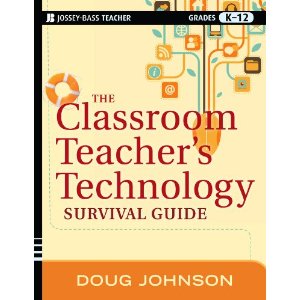Social networking scenarios - Carl's take
 Monday, September 20, 2010 at 09:31AM
Monday, September 20, 2010 at 09:31AM Carl Anderson left a great comment in the form of some alternate social networking scenarios on my post from last Thursday. His response was one of those that makes me feel really short-sighted and overly cautious. Thanks a lot, Carl!
My scenarios were "what if" problems; Carl's are "what if we don't" situations. In the long run will Cari's sins of omission be more problematic than my sins of commission?
Carl has given his permission to make his response a regular post.
Scenario 6:
Mr. Smith has created a class profile on a social networking site to use with his students. Through use of the site he posts announcements, celebrates student achievements, and builds a respectful relationships with his students and gets to know them in a way no other adult does. One day Mr. Smith finds an update posted by one of his students saying that he is fed up with the world, have given up hope, and can't see any reason to live. Mr. Smith then calls the kid's home, Dad goes to check on him and finds him in the middle of a suicide attempt. The student is then given proper help to deal with his problems.
 Scenario 7:
Scenario 7:
Principal Janet bans all forms of web 2.0 and social media for the reasons described in scenario 4*. Having put up an ironclad wall between the business of the school and what goes on online, she feels as if she has washed her hands of any responsibility in that space. Her walls prevent access to these tools for students, teachers, and herself. Having successfully blinded herself from seeing what happens on the other side of her firewall she becomes woefully unaware that embarrassing videos of her and her teachers that have been doctored by the students have gone viral and have caused irreparable harm to both the school and the professional image of it's employees.
Scenario 8:
School X imposes a zero-tolerance policy on the use of social networking and doesn't allow it's use by teachers or students at school. Students at this school all have Facebook and Myspace profiles that they keep and use to network with each other at home. Many of students have no guidance from parents at home on the use of these sites. Many post messages, pictures, and video of themselves doing things they will later regret. Unchecked and unseen by adults at school, things spiral out of control in their social network. A few years later, as the use of these tools becomes more important to the operation of the world for commerce, communication, and information, these students' profiles stick with them as they apply for jobs and colleges that, as a part of the application process, these sites to learn more about their applicants. Consequently, the school's college acceptance rate drops and many graduates find it difficult to find work.
Scenario 9:
A school is sued for negligence after a teenage girl commits suicide after being cyber-bullied on a social networking site the school blocks. The school also has a no cell phone policy but many students carry cellphones anyway (most because their parents want to be able to reach them in case of an emergency) but do a very good job of hiding their phones from their teachers. One girl takes a picture of another girl in the locker room at school then uploads the picture to her social networking profile. The picture, taken at school, then spreads quickly among students on that social network. Having chosen not to pay attention to the social activity students were engaging in online, the school had no idea how much this girl was being harassed by her classmates. The school is found guilty for negligence for not knowing their students well enough to recognize this harassment intervening.
Scenario 10:
School Z allows the use of social networking and web 2.0 tools but none of the teachers actively promote or necessarily do anything in their classrooms with it. However, they do allow students to access these tools on school computers and staff are encouraged to learn from their students about the websites they visit and what they do on them. Conversations about online behavior and activity are common between students and staff. One day an expensive piece of equipment is stolen from the school. Police are called but the thief left little evidence and the case is considered a dead end. One day a teacher notices on a picture on the screen of one of their students what appears to be the stolen equipment in one of their friend's uploaded photos. The equipment is found and returned, the student is disciplined for her action and the situation becomes a teachable moment for the school, its teachers, and its students.
*Scenario 4: The social networking ban
After hearing a presentation at a conference, high school principal Miller has banned all "Web 2.0" tools including Facebook, Skype, YouTube, wikis, blogs and Flickr. A number of teachers and many students are upset with this decision but Mr. Miller cites CIPA as a legal reason for blocking the sites.
Image source: http://onefte.com/2010/09/09/simple-social-media-guidelines/








Reader Comments